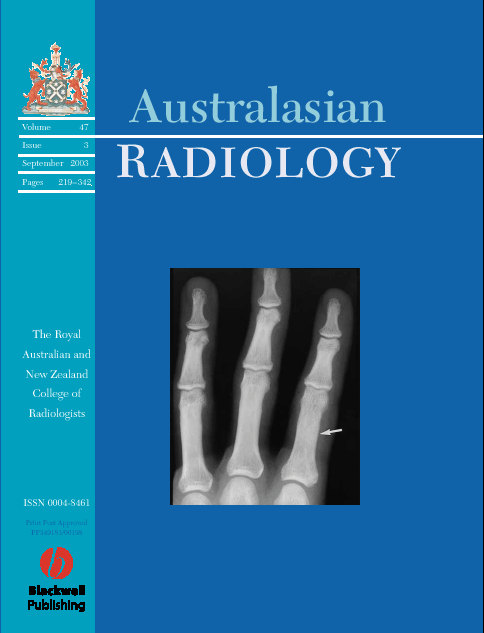Retinoblastoma: Review of 30 years’ experience with external beam radiotherapy
C Phillips MB BS, FRANZCR; M Sexton MB BS, FRANZCR; G Wheeler MB BS, FRANZCR; J McKenzie MB BS, FRACO, FRACS.
Summary
A review of the experience at the Peter MacCallum Cancer Centre (Peter Mac), Melbourne, Australia in treating retinoblastoma with external beam radiotherapy was conducted. Outcomes of particular interest were tumour control, vision preservation and treatment late effects. The review was restricted to patients that had intact eyes treated at Peter Mac from 1965 until 1997 with at least 2 years of follow up. Histories were reviewed regarding patient and tumour characteristics and treatment details. Thirty-five patients were identified in whom 47 eyes were treated. Of the tumours, 47% were Reese−Ellsworth stage IV or V and the majority of others were at high risk for vision loss because of tumour location. The radiation treatment technique became increasingly sophisticated during the study period. Radiation dose and fraction size have similarly evolved but most patients received 30−50 Gy. Since 1989, a highly accurate contact lens immobilization technique has been used to deliver 40 Gy in 20 fractions. Thirteen eyes required additional local therapy. Of the treated eyes, 34 (72%) remain intact and 74% of these have useful vision. One patient died from retinoblastoma and three from second malignant neoplasms. With modern radiotherapy, late toxicities other than growth arrest and non-progressive cataract did not occur during the study period. Tumour control was high and a very acceptable rate of organ and vision preservation was achieved in a relatively high-risk population. Modern radiotherapy continues to develop in an attempt to improve treatment accuracy and minimize late radiation toxicity.




